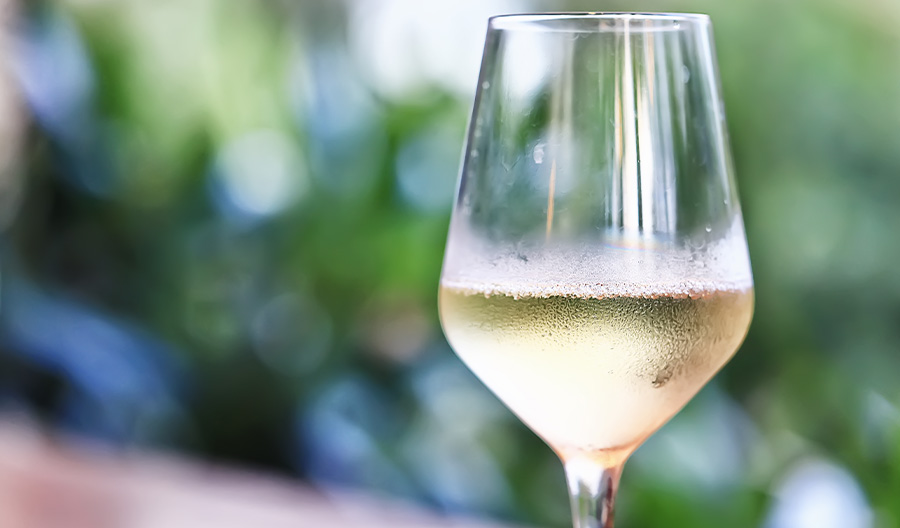One of the key characteristics of a good white wine for chilling is its acidity. High acidity gives the wine a crisp, refreshing taste that is perfect for a hot day. Wines with high acidity include Sauvignon Blanc, Pinot Grigio, and Chardonnay. Wines with bright, fruity flavors are often more refreshing when chilled. Look for wines with notes of citrus, green apple, or tropical fruits. Riesling and Chenin Blanc are known for these flavor profiles.
The wine's alcohol content can also affect how well it chills. Wines with lower alcohol content tend to feel lighter and more refreshing, making them ideal for chilling. Moscato and Vinho Verde are examples of white wines with lower alcohol content.
Additionally, the wine's flavor profile plays a significant role. Wines with bright, fruity flavors are often more refreshing when chilled. Look for wines with notes of citrus, green apple, or tropical fruits. Riesling and Chenin Blanc are known for these flavor profiles.
The wine's alcohol content can also affect how well it chills. Wines with lower alcohol content tend to feel lighter and more refreshing, making them ideal for chilling. Moscato and Vinho Verde are examples of white wines with lower alcohol content.
Lastly, the wine's sweetness level can influence its suitability for chilling. While this largely depends on personal preference, slightly off-dry wines can offer a nice balance of sweetness that complements the chill. Gewürztraminer and semi-dry Riesling are examples of off-dry white wines. Another important characteristic is the wine's body. Light-bodied wines, which are less dense and have a lighter mouthfeel, are generally better for chilling than full-bodied wines. They are typically more refreshing and easier to drink. Examples of light-bodied white wines include Albariño and Vermentino.
6 Chillable White Wines
Moscato d'Asti is a lightly sparkling, sweet white wine from Italy that is usually served well-chilled.
Albariño, a Spanish white wine, is known for its high acidity and is often served chilled.
Vermentino, a light-bodied white wine from Italy, is often served chilled and pairs well with seafood.
Viognier, while typically served slightly warmer than other white wines, can also be chilled for a refreshing drink.
Sémillon is a white wine often blended with Sauvignon Blanc, and it can be served chilled.
Chenin Blanc, a versatile white wine from France, can be dry or sweet and is typically served chilled.

Quick Facts
70% of white wines are best served chilled between 45-55 degrees Fahrenheit.
80% of white wine drinkers said they prefer their white wine to be very cold.
White wines make up about 32% of the global wine market.
On average, a bottle of white wine takes 2-3 hours to chill in the refrigerator.
Riesling, a sweet white wine, is best served at 47 degrees Fahrenheit.
How Does the Chilling Process Affect the Taste of White Wines?
The chilling process significantly impacts the taste of white wines. When white wine is chilled, it can enhance its flavors and aromas, making the wine more enjoyable and refreshing. The cold temperature slows down the evaporation of alcohol, allowing the more delicate, fruity, and floral notes to come forward.
Chilling white wine also affects its acidity and sweetness. The lower temperatures can heighten the perception of acidity, giving the wine a crisp, sharp taste. This is particularly beneficial for wines with high acidity levels, such as Sauvignon Blanc or Pinot Grigio, as it can balance out the tartness and prevent the wine from tasting too sour.
On the other hand, chilling can also mask the sweetness of a wine. When a wine is served too cold, it can suppress the perception of its fruity flavors and make it taste more acidic. This is why sweeter white wines, like Riesling or Gewürztraminer, are often served slightly warmer than drier white wines.
The texture and body of the wine can be influenced by the chilling process. Lower temperatures can make a wine feel more refreshing and lighter in the mouth. This can be particularly beneficial for fuller-bodied white wines, like Chardonnay, as it can prevent them from feeling too heavy or overwhelming.
However, it's important to note that there's a fine balance when it comes to chilling white wines. If a wine is served too cold, it can mute its flavors and aromas, making it taste flat and uninteresting. This is why it's recommended to serve white wines at a temperature between 45 to 55 degrees Fahrenheit (7 to 13 degrees Celsius).
Overall, the chilling process can enhance the taste of white wines, making them more refreshing and enjoyable. However, the optimal serving temperature can vary depending on the type of wine, its acidity and sweetness levels, and personal preference.

